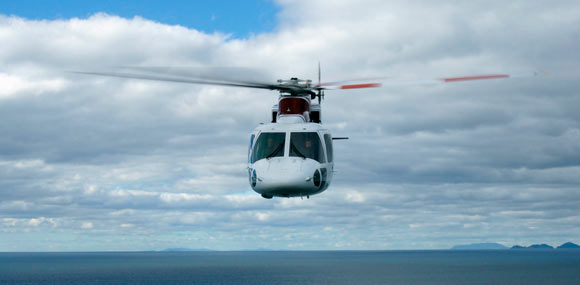This is a brief overview of Part 1 of the “Flying in the Wire and Obstruction Environment” course. It is designed
to give low level pilots and other crew members the specific skills they need to safely fly in the wire
and obstruction environment.
The course is very professionally presented using multi-media and is acclaimed by professional fixed wing
and helicopter operators world-wide. A great many companies require this training before allowing pilots
and/or flight crew to fly in the low-level wire environment.
A brief overview of the topics we will cover during the course is as follows:
How risk enters into low-level flight operations.
It is acknowledged by the Federal Aviation Administration that the wire and obstruction
environment is the most lethal environment you can operate an aircraft in and is the
number one cause of fatal accidents in the civil helicopter industry. The risks and
hazards associated with this environment are not generally understood by aviators as
they are not aviation specific and pilots and flight crew members do not learn about
them in their normal aviation training throughout their careers. The skills needed to train
flight crews in this science involve a complete expertise in the dynamics of low-level
flight, ophthalmology and universal understanding of line design and electrical
engineering. Trainers must be able to apply and modify all four of these training skills to
your local area as any or all of them will change relative to your specific area of
operations.
The “Basic Awareness’s” flight crews must have and maintain while operating in the
wire and obstruction environment.
There are a total of twelve to seventeen basic awareness’s (depending on your local
area of operation) that both pilots and flight crew members must have and maintain in
the wire and obstruction in order to safely navigate through it. These basic awareness’s
are not taught anywhere in the normal mainstream aviation education process as they
are not generally understood by pilots. Our training specialists have a firm background
in the dynamics of low-level flight, visibility science and universal understanding of line
design and electrical engineering.
Understanding your exposure to the wire and obstruction environment.
A very large percentage of wire and obstruction strike accident victims had no idea they
were even in the wire and obstruction environment at the time the accident occurred.
This is largely due to their lack of knowledge of how exposed they are while conducting
their specific missions. Our training specialists understand how a wide variety of lowlevel
missions expose crews to very different hazards and are able to train flight crews
on their specific exposure to the environment they operate in.
Crew Resource Management (What the pilot and crewmembers need to do to act
together as a crew in the wire and obstruction environment)
Traditional CRM is not sufficient training for flight crews who operate in the low-level
wire and obstruction environment. Flight crews often consist of pilots working with non-
pilots which require a very specific slant being applied to low-level CRM training. In
addition, low-level crews need to be focused on very different things than normally
taught in conventional CRM. Our training specialists understand these differences and
also understand how to effectively communicate these differences to both pilots and
non-pilot crew members.
The responsibilities of each crew member.
There are very specific duties and responsibilities that both pilots and crewmembers
need to understand and apply in order to operate as a safe and effective crew in this
environment. In-flight communications take on a different dimension between pilots and
non pilots. Our training specialists understand these duties as they have had career
experience operating and training pilots and non-pilot crew members in the wire and
obstruction environments.
Understanding the dynamics of the wire environments.
Understand the dynamics of the numerous wire systems that populate the planet is
essential to be able to see a wire strike accident in time to stop it from happening.
Aviators are used to operating under the FAA’s mandate that it is the pilot’s responsibility
to see and avoid. Unfortunately, the concept of “see and avoid” often fails in the wire
and obstruction environment. Crews must be able to “read the environment” in order to
avoid the traps waiting for untrained low-level crews. Our training specialists
understand these dynamics as they have had career experience in both the low-level
aviation business and in understanding the dynamics of the wire and obstruction
environments.
Visibility Engineering
What you can and can’t see involves understanding the limitations of the human eye as
well as the many illusions and visibility traps in the wire environment waiting for the
untrained crew. Crews must understand what causes the numerous illusions in the wire
environment and what they must do to manage them or engineer them out. Crews must
also understand how the “high wire reconnaissance” is different than what normal
untrained flight crews understand to be an adequate reconnaissance. Our training
specialists understand these visibility science issues as they have been trained by
some of the foremost visibility experts in the world on low-level visibility issues.
Additional dangers during low-level operations.
There are additional dangers in this lethal environment that have nothing to do with wire
yet require a firm understanding and knowledge of Electrical and Mechanical
engineering principals. These additional dangers must be thoroughly discussed by
trainers who understand them and can demonstrate how to manage them.
As you can see, this course covers every aspect of all skill sets needed by low-level crews to stay safe
and productive on any type of low-level aviation mission. It has been developed and refined over
twenty five years by some of the best low-level flight crews in the world and is endorsed by the
Helicopter Association International, the Helicopter Association of Canada, the Helicopter Association
of Australia and the Aviation Industry Association of New Zealand.
